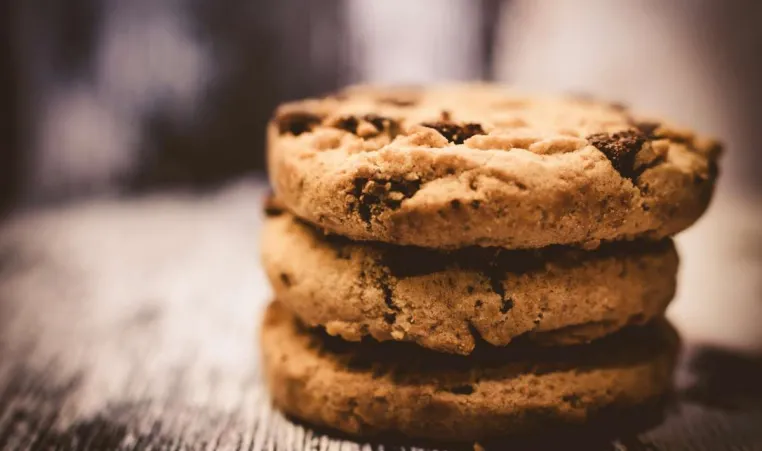
The A-B-Cs of Behavioral Science can help kick old habits and form new healthy ones.
Michael Reisman, M.Ed.
I love sweets, especially after dinner. Cake, pie, ice cream, and cookies of all kinds seem to overwhelm my senses. The holidays (Halloween through New Years) are an especially vulnerable time for me. Now here I am in January, and the ten pounds I lost when I was healthy (New Years until Halloween) are back. Time to try and break the cycle.
In the previous blog article posted to www.ymcabhc.org, Wellness Resolutions and setting SMART Goals in the New Year, Justin Grand shed some light on the psychology behind new year's resolutions, why they are prone to failure, and how they can be successful. Much of the research behind that article focuses on how new behaviors become habits, starting from the early stage of desire and motivation, sticking with them when they are far less exciting, and following through until those new behaviors become habitual. This article examines behaviors we wish to eliminate, with the hope that we all have a better understanding of how to work through the challenges.
Quitting old habits requires a change in behavior, so looking at our current habits through the lens of behavioral science helps us understand the when, where and why we do what we do, and how we can change.
- Identify the behavior you want to track. Eliminating an old, undesirable habit is challenging for anyone, and some are more difficult to break than others. Successfully quitting a habit often requires replacing it with a new, healthier habit, but not always. Honing in on a singular behavior to modify or eliminate and analyzing it is a good first step. For example, eating sweets high in processed sugars and calories.
- Track the behavior: Note when you are doing the behavior. Keeping a journal of instances makes it easier to look back and see the circumstances around the behavior. Note the day, time(s), your location, and what you are doing when provoked or triggered to engage in said behavior. For example, I tend to reach for candy, cookies or cake in the evenings, following eating and cleaning up from dinner, about to sit down and relax. Some find it helpful to track a behavior meticulously on paper. However, as in my example, a behavior can sometimes be easily tracked because of its consistency in having become a habit. The circumstances and environment in which the behavior takes place are often referred to as the triggers or antecedents.
- Note the consequences of the behavior. Consequences can reveal themselves as the rewards of the behavior, but also a negative result of the behavior. The indulgence of sugary high calorie sweets provides the immediate satisfaction of the initial craving for sweets, as in, “Mmmmm…delicious.” However, as is often the case for me, that satisfaction leads to consuming one after the next in the same sitting. This behavior then can result in abdominal discomfort, difficulty falling asleep at bedtime, and of course, the shame of having undone progress in my own health.
- Replace the consequences and antecedents. Once we have a better sense of the antecedents, behavior and consequences (ABC), we can begin to make changes to the consequences (intentionally imposing new ones) and antecedents, which therefore will alter our routines and modify bad habits.
For the sake of simplicity, but understanding life is not simple, let’s continue with my example. Instead of the results of the behavior as they are, I set new long and short term consequences to achieve: My tummy will feel good. I will get to sleep on time. I will be proud of myself. I will also change my antecedent so as to dismantle the power of the trigger. Instead of heading for the sofa after cleaning up from dinner, I will plan a brief, yet more active and enjoyable thing to do: either playing ping pong with my son, or walking the dog with my wife. I have now replaced the undesirable behavior with a more positive one. Upon completion of the new behavior, I can treat myself to a serving of fruit, yogurt or granola. To top it off, as a tool to keep me motivated, I promise myself a scoop of ice cream with hot fudge and sprinkles over the weekend following a successful week. Consistent and persistent implementation of the new routine with moderate rewards will allow the routine to become a habit, moving from having to consciously think about and implement each evening, to the subconscious, second nature I need to achieve in order for the new behavior to become habitual.
Again, this article does not intend to oversimplify or make light of how challenging it is to eliminate unhealthy habits and form good ones. The younger you are, the easier it has proven to be, and there are plenty of cliches to stand in our way. “Old habits die hard,” and “You can’t teach an old dog new tricks,” come to mind. Regardless, old habits can, in fact, die, and you CAN teach an old dog new tricks. But it requires commitment, persistence and consistency. Worst of all, no cheating. But it can be done, and when we know a little better how it all works in the mind, we have a better chance at success. To learn more, check out the links in the resources below.
About the Author
 Michael Reisman is Director of Communications for YMCA of Bucks and Hunterdon Counties. Michael earned a BA in Journalism from Rutgers University in 1997 and Masters Degree in Education from the University of Washington in 2011. Michael has served the YMCA community since 2017.
Michael Reisman is Director of Communications for YMCA of Bucks and Hunterdon Counties. Michael earned a BA in Journalism from Rutgers University in 1997 and Masters Degree in Education from the University of Washington in 2011. Michael has served the YMCA community since 2017.
Resources
Blount, A. (2021, July 28). Ways to Change A Habit. Psychcentral.com.
Changing Habits, The Learning Center, University of North Carolina at Chapel Hill
Haden, J. Change Any Habit Painlessly: 6 Tips, Inc.com,
1 Quitting smoking, drinking, or any other habit that could be characterized as addiction involves biochemical and neurological intervention, often guided by a physician or medical professional who specializes in helping patients recover from addiction.